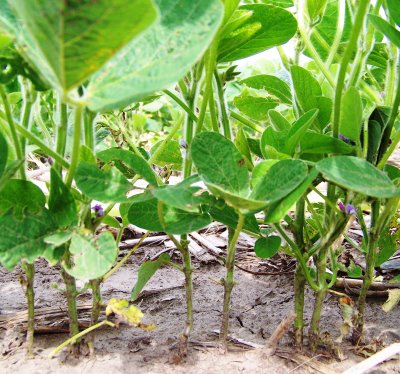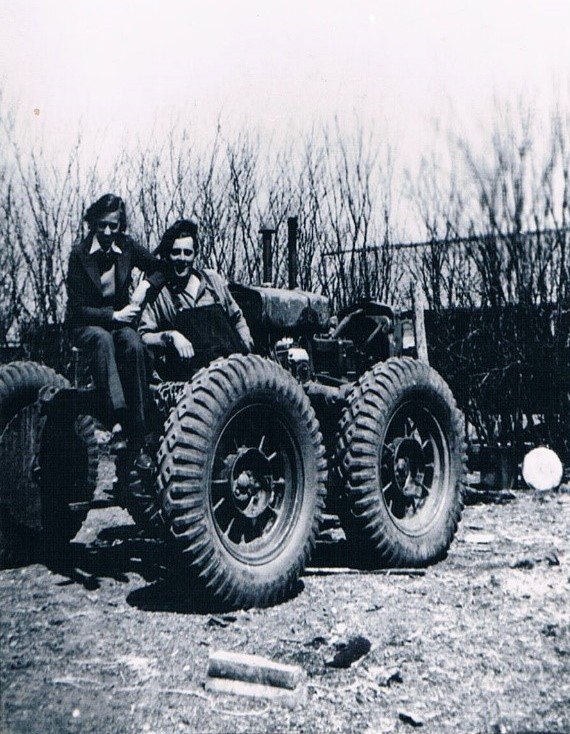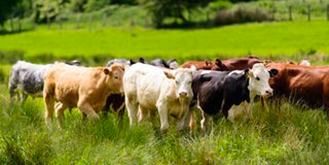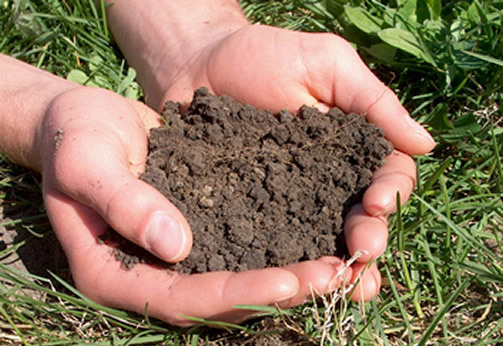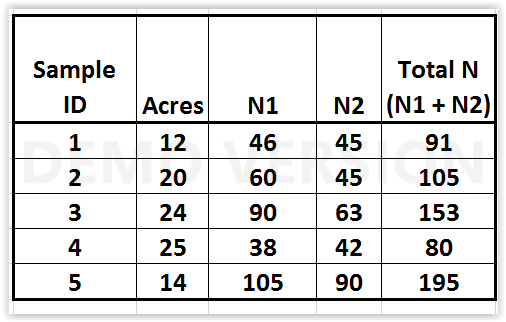We have been spending alot of time talking with our customers about spring placement of your nitrogen as per our last blog post….Take a few minutes to look at this summary written by John Heard and Don Flaten that was adapted from Cynthia Grant’s presentation at the Manitoba Agronomists Conference this winter. It is a fairly long article for a blog but definitely worth taking the time to read. It has been passed along to many grower organizations so you may have seen this info already. We thought it was valuable to post. It also serves to compliment the information we will be reiterating in our agronomy contribution to Reit -Syd’s annual Spring booklet.
Spring Options for Applying Nitrogen Fertilizer in 2017
With the wet conditions and delayed harvest experienced in parts of Manitoba in fall 2016, very few farmers were able to complete their fall fertilization program. Since early seeding is important for optimizing crop yield, producers will be looking for ways to apply their N requirements efficiently without delaying the seeding operation. In addition, soil reserves of N are variable and margins between crop revenue and input costs are modest; therefore, optimizing nitrogen fertilizer use efficiency is important. To achieve these objectives for a spring fertilization program will require use of a 4R nutrient stewardship strategy: applying the right rate of the right fertilizer source, with the right placement and at the right time to minimize losses of fertilizer N to the environment and optimize the crop’s access to the fertilizer.
Minimize Fertilizer Losses to the Environment
Fertilizer use efficiency will be greatest when a source, placement and timing combination is used that minimizes nitrogen losses by the following mechanisms.
1) Volatilization is the loss of N to the atmosphere as ammonia gas. Ammonium and ammonium-producing sources, such as urea or UAN solution, may be lost by volatilization when left on the soil surface, while nitrate sources are not. The ammonia travels with soil moisture, so volatilization losses increase with factors that increase evaporation, such as high air and soil temperatures and wind. Applying the fertilizer when temperatures are cool, winds are light and rainfall is imminent helps to reduce volatilization losses.
Table 1. Conditions that Affect Volatilization Losses of N Fertilizer
| High Loss Potential |
Low Loss Potential |
| moist conditions, followed by rapid drying
high wind velocity
warm soil temperatures
high soil pH (> pH 7.5)
high lime content in surface soil
coarse soil texture (sandy)
low organic matter content
high amount of surface residue (Zero Till) |
dry conditions, followed by rainfall
low wind velocity
cool soil temperatures
low soil pH (<7.0)
no lime at soil surface
fine textured soil (clay)
high organic matter content
low amounts of residue (intensive tillage) |
2) Immobilization refers to the “tie-up” of N in the soil microorganisms as they decompose crop residues and use plant available N, such as ammonium and nitrate, for their own growth and reproduction. This is a temporary loss, since the N will become plant available when the microorganisms die and decompose, but it restricts N availability in the year of application. Immobilization losses are greatest for crop residues that have a low concentration of N or a high ratio of C to N (e.g., cereal crop residues) and when straw volumes are high (e.g. corn and wheat straw versus canola or soybean residue).
3) Denitrification is the conversion of nitrate-N to gaseous forms of N, which can be lost to the atmosphere. Denitrification occurs when available oxygen in the soil is limited. This can occur under very wet or flooded conditions or when the soil is very compacted. Losses are therefore larger on fine-textured soils (e.g., clay) and in depressional areas of the landscape, such as bottom-slope positions. Even when the soil is not completely flooded, there will be microsites in the soil where oxygen availability is limited and denitrification can occur. Rate of denitrification will be faster when soil temperatures are warm, because the activity of the microorganisms that cause denitrification increases with increasing soil temperature.
4) Leaching is the movement of N in the soil water down through the soil profile. When the N moves below the rooting depth, the plants can no longer reach the N, so it is lost for crop use and poses a threat to groundwater quality. Ammonium-N is normally bound to soil particles and so protected from leaching losses. Therefore, N in the nitrate form is much more susceptible to leaching losses is the ammonium form. Leaching will increase with increasing precipitation and is greater on light-textured (sandy) soils with lower water holding capacity.
5) Runoff and Erosion losses of fertilizer N are not generally a serious problem where fertilizer is banded or incorporated. However, if a surface application is followed by heavy rainfall, losses may be substantial.
The potential for N loss from these pathways will depend on soil type and environmental conditions. Therefore, when selecting a fertilizer management program to minimize these losses, the soil and environmental conditions should be evaluated to assess the relative risk of losses by volatilization, immobilization, denitrification, leaching and runoff or erosion.
Optimize Crop Access to Fertilizer
In addition to minimizing losses, an effective nutrient management program ensures that an adequate supply of nitrogen is present in a position where the crop can access it at the time that it is needed by the crop.
1) Positional Availability and Surface Stranding – Under dry conditions, surface applied fertilizer that is not incorporated can become physically isolated or stranded in dry soil, unavailable to the active portion of the crop’s root system. Conversely, banding of fertilizer N often increases the efficiency by improving access to fertilizer by roots, especially under dry soil conditions.
2) Timing for Increased Yield – Early applications, at, prior to or shortly after planting, will produce the greatest yield benefit since crop yield potential is determined early in the growing season. Ideally N should be applied to cereals at or before the 3-5 leaf stage and prior to bolting of canola, especially if no N is applied at or before seeding. If at least 50% of the crop’s N requirement is applied at or before seeding, supplemental applications to cereals as late as the stem elongation or heading stage may be acceptable; however, applications of N later than this is more likely to result in increases in protein rather than yield.
Options for Spring Application of N
While a wet fall in 2016 may challenge producers in the spring of 2017 to complete seeding and fertilizing operations in a timely fashion, there are many options for nitrogen management available. Ultimately, every N fertilization package has advantages and disadvantages. In selecting the optimum fertilization system, the balance between rate of application, cost and availability of equipment, soil disturbance, seed-bed quality, moisture conservation, time and labour constraints and fertilizer use efficiency must be considered against the backdrop of the other demands in the overall operation. The objective is to improve farm management, not just fertilizer management. With competing and unique demands within each farm operation for time, labour, equipment and financial resources, flexibility in nutrient management is an important consideration. Often losses in efficiency in one area can be compensated for by improvements in efficiency in another. Therefore, the “best” fertilization system is not universal, but will depend on the major limiting factors on each individual farm. By evaluating the potential risk of losses and the options available for their particular farm, producers can determine management options that will ensure effective crop use of the fertilizer, while allowing seeding to be completed in a timely and effective fashion.
1) Pre-plant Banding: Banding N in concentrated rows below the soil surface tends to be the most efficient form of application under western Canadian conditions. Placing the fertilizer below the soil surface protects the ammonia portion from volatilization losses. Placing the fertilizer in a band reduces the contact between the fertilizer and the soil microorganisms, reducing immobilization of both ammonium and nitrate. Banding also slows the conversion of urea to ammonium and ammonium to nitrate, which can reduce losses by denitrification and leaching. Ideally, bands should not be disturbed by pre-seeding tillage or seeding operations.
All forms of N fertilizer perform well when applied as a spring pre-plant band, provided that the fertilizer is separated from the seed. Anhydrous ammonia (NH3) should be placed at least 4 inches below the soil surface and, if possible, seeding should be done perpendicular to ammonia bands. There is no need to delay seeding after application if anhydrous ammonia is placed at recommended depths, especially on moist clay soils. However, pre-plant banding may potentially delay seeding and dry and disrupt the seed-bed, especially in clay soils (in some cases, though, these same soils may require some form of preseeding tillage due to the large ruts leftover from harvest operations in the fall of 2016).
2) Surface Applications Immediately Before or After Seeding: Broadcasting is a very rapid method of applying fertilizers, with applicators being able to cover as much as 1000 acres per day. However, urea or UAN solution sources of N can be lost by volatilization until they are incorporated or move into the soil with precipitation. Tillage during conventional seeding operations is generally sufficient to incorporate urea or UAN solution and reduce volatilization. If either ammonium or nitrate sources are in close contact with crop residues, they may also be subject to immobilization as the residues decompose, since microorganisms will use N from the soil or fertilizer as they break down crop residues that may be low in N (e.g., cereal residues). Surface stranding of broadcast fertilizer, in dry soil above the active portion of the crop’s root system may also be a problem in some weather conditions. High rates of broadcast urea-N applied without incorporation on fields seeded with disc-openers may concentrate pellets in the seed-furrow and cause seedling damage to sensitive crops like canola.
Because of the high potential for volatilization and immobilization losses, surface applications of N tend to be less efficient than in-soil banded applications. Efficiency of surface applications tends to improve in higher rainfall areas, since precipitation is more likely to move the fertilizer into the soil, reducing the risk of loss and of stranding at the soil surface. Efficiency is lower on high pH soil, since high pH encourages the production of ammonia gas.
While often less efficient than in-soil banded or incorporated fertilizers, surface N applications without incorporation may play a role in fertilization of forages, winter cereals and for post-emergent N delivery. However, lack of fertilizer incorporation will increase the risk of volatilization and immobilization losses. As a result, dribble banded UAN, to reduce contact with crop residues and soil, will generally be a better choice than broadcast urea for surface applications, unless a urease inhibitor is added with the urea (see next paragraph). Volatilization losses with dribble banded UAN will be lower than with urea, both because the UAN provides a portion of the N as nitrate and because UAN does not increase initial pH at the application site to the same extent as urea. Both of these factors reduce the proportion of N present as ammonia, thus reducing volatilization. Use of a dribble-band rather than a spray application also reduces contact between the fertilizer and crop residue, reducing immobilization. As a result, in several field studies in Manitoba, surface dribble-banded applications of UAN were nearly as effective as in-soil banded applications.
Another option to reduce the risk of volatilization loss from broadcast fertilizer is to use urease inhibitors such as Agrotain that is applied with urea or UAN or manufactured into a product like SuperU. Urease inhibitors slow the conversion of urea to ammonia and ammonium. This allows more time for the urea to move into the soil before it is converted into ammonia and ammonium. Also, the slower conversion reduces the concentration of ammonia at the soil surface, reducing the rate of volatilization. The economic benefit of the urease inhibitors will depend on the relative risk of volatilization loss and the cost of the fertilizer and the urease inhibitor. As volatile losses from UAN are generally lower than from urea, the benefit of using the urease inhibitor may be lower with UAN than with urea.
While a higher rate of fertilizer may be required to compensate for the reduced fertilizer use efficiency for surface applications, this may be a practical compromise, particularly for producers who are not willing or able to purchase specialized equipment for in-soil fertilizer placement.
3) Placement in the Seedrow: Placement of fertilizer in the seed-row is an attractive option, since it eliminates an extra pass for fertilizer application. If the fertilizer is placed directly with the seed, it eliminates the extra expense, draft requirements and soil disturbance required to side-band the fertilizer requirements. Seed-row placement is a form of banding, so it is efficient in terms of reducing N losses.
However, applying excess nitrogen with the seed can lead to seedling damage due to combination of salt and ammonia toxicity. Such damage often reduces crop yields, reduces response to nitrogen fertilizer and reduces nitrogen use efficiency. In addition, seedling toxicity may also delay crop emergence and reduce crop vigour, increasing potential losses from weed competition; delay crop maturity, increasing risk of damage from fall frosts; and lower crop quality. In all cases, the eventual impact of seedling toxicity problems on crop yield and quality at harvest is highly dependent on the type of growing season.
The amount of seed-placed fertilizer that can be safely applied depends on a number of factors including environmental conditions, crop grown, soil type, width of the seed/fertilizer band, row spacing and fertilizer source. Small seeded crops such as flax or canola are more sensitive to seedling damage than crops such as wheat or barley. With cereal crops, urea tends to be more damaging than ammonium nitrate, while urea ammonium nitrate (UAN) tends to be intermediate, since it is a blend of urea and ammonium nitrate. Rate applied with the seed must be decreased with light textured soils, low soil organic matter, cool growing conditions, low soil moisture, in the presence of salts or free lime, or with the use of wide row spacing. Use of air seeders with wide sweeps and/or narrow row spacings allow for increased levels of seed-placed fertilizer, since the concentration of fertilizer in contact with the seed is reduced as the seed and fertilizer are spread over a wider zone. However, air drills with wide row spacings and/or narrow knife or disc openers will decrease the amount of fertilizer that can be placed safely in the seedrow. For more detail about determining safe rates of N fertilizer that can be applied with cereals and canola, please refer to the Manitoba Soil Fertility Guide (see page 6 of the booklet or view the web version at: www.gov.mb.ca/agriculture/crops/cropproduction/gaa01d25.html
The amount of damage from seed-placed fertilizer can vary greatly from year to year, depending on the specific conditions at seeding, so a rate which caused no problems one year may cause significant damage the next (eg. risk of damage is greatest with dry weather). A reasonable compromise may be to apply a portion of the fertilizer with the seed and broadcast or dribble-band the remainder.
Use of a controlled release product like ESN, may increase the rate of N that can safely be applied with the seed. The amount of safety is difficult to predict since fracturing of the polymer coating may occur during handling, transport and air-seeder delivery. The suggested safe rate limits are based upon the provincial guideline referred to above and the proportion of ESN in the blend with seedplaced urea. At 100%, ESN can be used at 3 times the safe urea rate, and a 50% ESN:urea blend can be used at 1.5 times the safe urea rate, assuming a low level of damage to the protective coating.
4) Side-banding or Mid-row Banding at Seeding – Side banding N to beside and below the seed will decrease the risk of ammonia toxicity compared to seedplacing. Many commercial and home-manufactured openers have been designed for one-pass seeding and fertilizing. These include simple systems where fluid N is dispensed through a tube on the seed-opener and mixed with the soil as it falls back over the seed, combination seed and fertilizer boots which place the N in a band separated from the seed, and systems with separate openers for side-band or mid-row placement. Often the entire N needs of the crop can be met through sideband placement, but recent research indicates that placement 1” to the side and 1” below may NOT be sufficient separation for crop safety. Therefore, if the entire N needs are to be applied, the side band should be at least 2” from the seed row for solution or dry fertilizer and at least 2-3 inches from the seedrow for anhydrous ammonia.
Mid-row banding the N between every second row at seeding maintains the greatest degree of seed safety. Less soil disturbance and hence more moisture retention would be achieved with a disk type mid-row bander unit compared to a shank-type.
Fluid sources are particularly suited for one-pass systems, as application equipment for fluids is often easier to work with and cheaper to modify than equipment for granular or ammonia application. Anhydrous ammonia is a relatively low-cost nitrogen source and can be safely applied using side-band or mid-row band equipment, as long as the seed-fertilizer separation is adequate. It is important to ensure that the anhydrous ammonia does not travel through soil pores or fractures to the seed, so adequate horizontal separation is important. Good opener wearability, good tilth, good moisture conditions, and reasonable speed of operations are also important to ensure that seed and fertilizer separation are maintained. Wing-tip injection of anhydrous ammonia on sweep openers has performed well for cereals on heavier soils. However at the shallower seeding depths required for canola or flax, there may not be sufficient soil coverage to prevent ammonia escape to the surface.
Many of the commercial seeders do a very good job of side-banding or mid-row placement, but the cost of this type of equipment with capacity to deliver seed and fertilizer separately can be high. Draft requirement and seed-bed disturbance may also increase and trash clearance may become a problem. However, the benefits of combining seeding and fertilization into one operation can be significant and may pay long term dividends.
Recently there have been concerns over shallow placement of urea or UAN in the soil and volatilization potential. Field studies in eastern Manitoba have shown urea placement at ½ to 1” depth had slightly more volatilization than at 1.5 to 4” placement, but yields were unaffected. Proper coverage and packing may help minimize any potential for loss.
5) Banding Ammonia Immediately After Seeding
Limited research and practice indicates that banding anhydrous ammonia immediately after seeding may have some advantages over topdressing in terms of cost and efficiency. Research was conducted many years ago on heavy clay soils seeded with diskers or early generation air seeders. If such a strategy is attempted, ensure that anhydrous ammonia is placed perpendicular to direction of seeding, using a narrow knife or low disturbance opener to minimize destruction of the seedbed. Also ensure that anhydrous ammonia is injected at the recommended depth to minimize the potential for seedling damage and to prevent ammonia escape from the trench.
6) Post Emergence or Midseason Applications
As mentioned previously, under western Canadian conditions, banded application of N prior to or at seeding generally has the greatest benefit since crop yield potential is determined early in crop growth and banded applications are more efficient than surface applications. Generally, under Manitoba conditions, applying all or part of a crop’s N requirements after emergence does not produce higher yields than pre-plant or one-pass applications. However, in some cases, producers may not be able band their N fertilizer prior to seeding due to time limitations or risk of seedbed quality problems. In other cases, producers may want to delay applying a portion of their N fertilizer until they have better estimate of their crop’s yield potential.
In these cases, top-dressing is often a reasonably efficient method of applying nitrogen fertilizer if rainfall is received soon after application, which is common in the spring in much of Manitoba. However, post-seeding surface applications will be subject to the same considerations as surface applications prior to seeding.
Since adverse weather may delay post-seeding applications, some N should be applied at seeding if available soil N is low. There may also be an enhanced risk of stranding of N at the soil surface with prolonged dry weather. Therefore, likelihood of a benefit from post-seeding applications increases with the likelihood of receiving significant in-season precipitation. This is because the crop is more likely to be able to access and take up the applied N and because if yield is primarily limited by available moisture, in-season rainfall increases yield potential and response to applied N. In addition, denitrification and leaching losses of nitrogen already present in the soil will be greater under wet conditions.
If no N is applied at or before seeding, post-emergent N should be applied to cereals at or before the 3-5 leaf stage and to canola prior to bolting. Losses will be higher on high pH soils. However, if at least 50% of the crop’s N requirement is applied at or before planting, supplemental midseason applications can be delayed as late as the stem elongation or heading stage for cereals.
UAN is well-adapted to use for post-seeding N applications if it is dribble-banded, dropped below the leaf canopy or injected using coulter applicators after crop emergence. Conversely, applying UAN in a full-coverage spray may result in leaf burning and significant losses of N. Adding a urease inhibitor to UAN will further help to reduce foliar damage and volatilization losses from post-emergence applications. Similarly, adding a urease inhibitor to urea or using a urea fertilizer that contains a urease inhibitor (e.g., SuperU) will help to reduce volatlization from broadcast granular fertilizer.
Use of Enhanced Efficiency Fertilizers (EEFs) to Reduce N Losses in Wet Soils
The directed use of enhanced efficiency fertilizers or inhibitors has been mentioned above in regards to volatilization and seed safety. Several enhanced efficiency fertilizers or inhibitors have additives that slow down nitrification, the process where ammonium is converted to nitrate, the form of N that can be lost by leaching and denitrification under wet conditions. These include nitrapyrin (as N-Serve for anhydrous ammonia and eNtrench for urea and UAN) and DCD (in SuperU and Agrotain Plus for UAN). Similarly the controlled release N such as ESN slows the accumulation of nitrate-N. Such products may be beneficial when nitrate-N is exposed to prolonged excessively wet conditions and when crop uptake is low.
(Adapted from Spring Options for Nitrogen Fertilization, presented at the Manitoba Agronomist’s Conference by Dr. Cynthia Grant)
For further details contact:
John Heard, Manitoba Agriculture, Carman, MB E-mail John.Heard@gov.mb.ca
Dr. Don Flaten, University of Manitoba, Winnipeg, MB E-mail: Don.Flaten@UManitoba.ca



